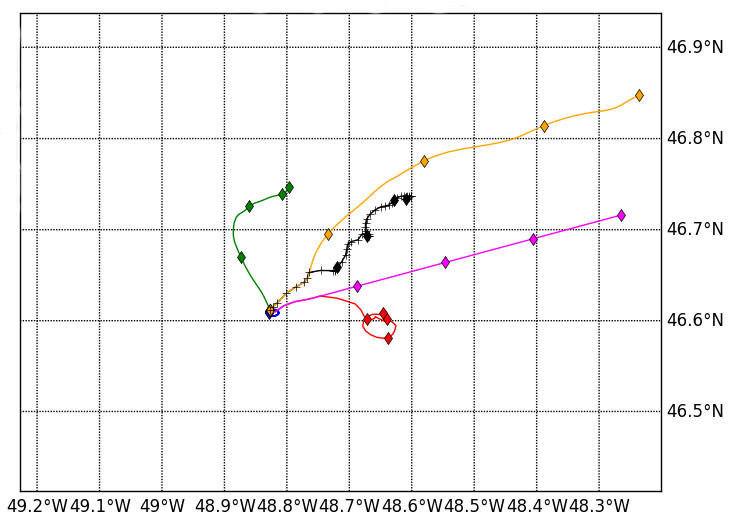Ice island and iceberg drift modelling
Research on iceberg drift dates back to the 1980s, when two basic approaches were proposed. The so-called deterministic approach uses a force balance model to estimate acceleration which can be used to get iceberg position over time. The so-called statistical approach treats wind drift and current drift as additive components using simple velocity-proportional drift, with tidal currents and mean flow modelled as other additive components. The current-induced drift is recognized to be persistent over short time and space scales which can be extrapolated for tactical forecasting on the order of 10 hours or more, depending on the local oceanography.
The use of the deterministic model is prevalent, despite the fact that it requires fine-scale forecast currents that are usually not available, and the fact that it requires consistent drag coefficients and underwater profiles that are also unavailable in most operational situations. We are re-visiting the statistical model in light of modern ocean models and more accurate measurements to see if we can provide more comprehensive mean flow information, and forecast motion due to fine-scale currents from analysis of the recent drift track. We are using newly-available drift and in-situ data to compare accuracy of deterministic and statistical models with the objective of combining the best features of both.

An iceberg drift track (blue) and various drift model trajectories over a 48 hour period.
Development of this drift model has benefited greatly from collaboration with ASL Environmental Sciences Ltd., their financial contribution, as well as funding from MITACS, Polar Knowledge Canada and the Ontario Ministry of Research and Innovation. Hai Tran of the Canadian Ice Service generously provided data.
